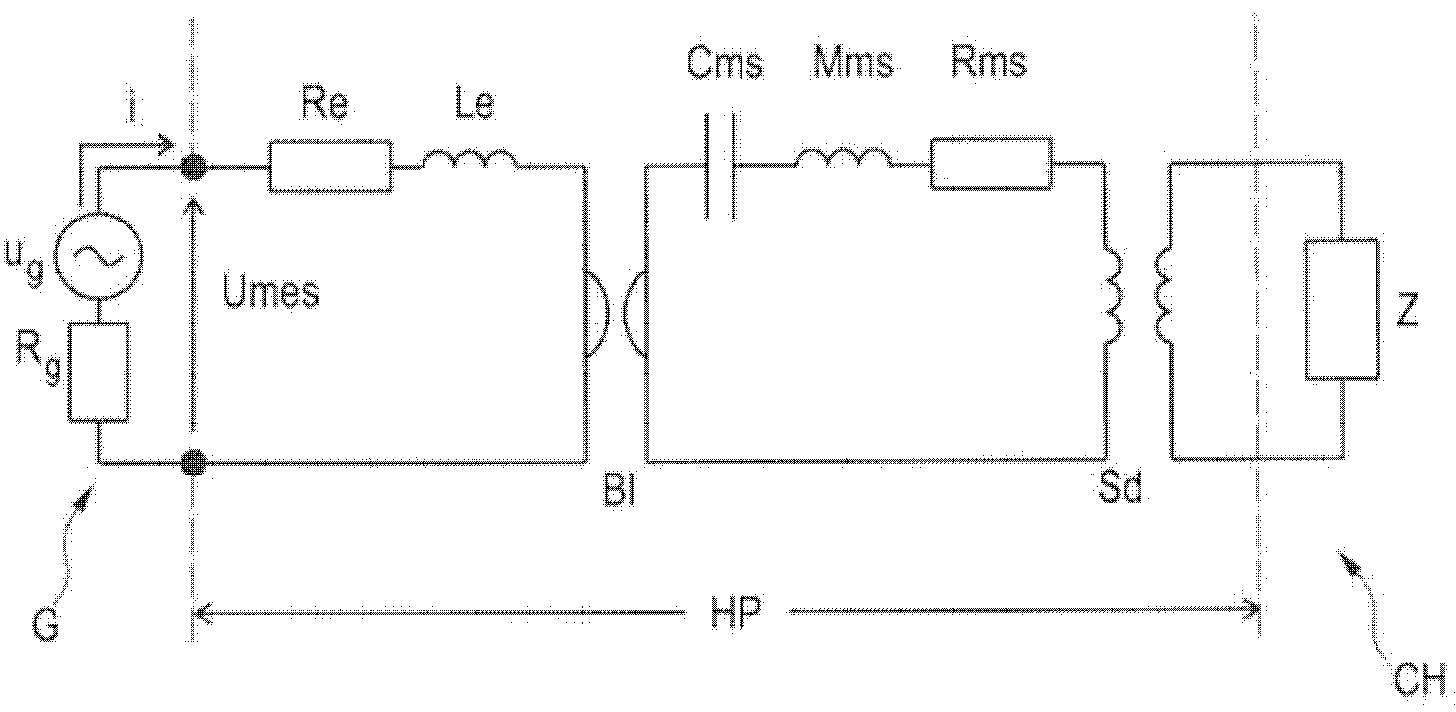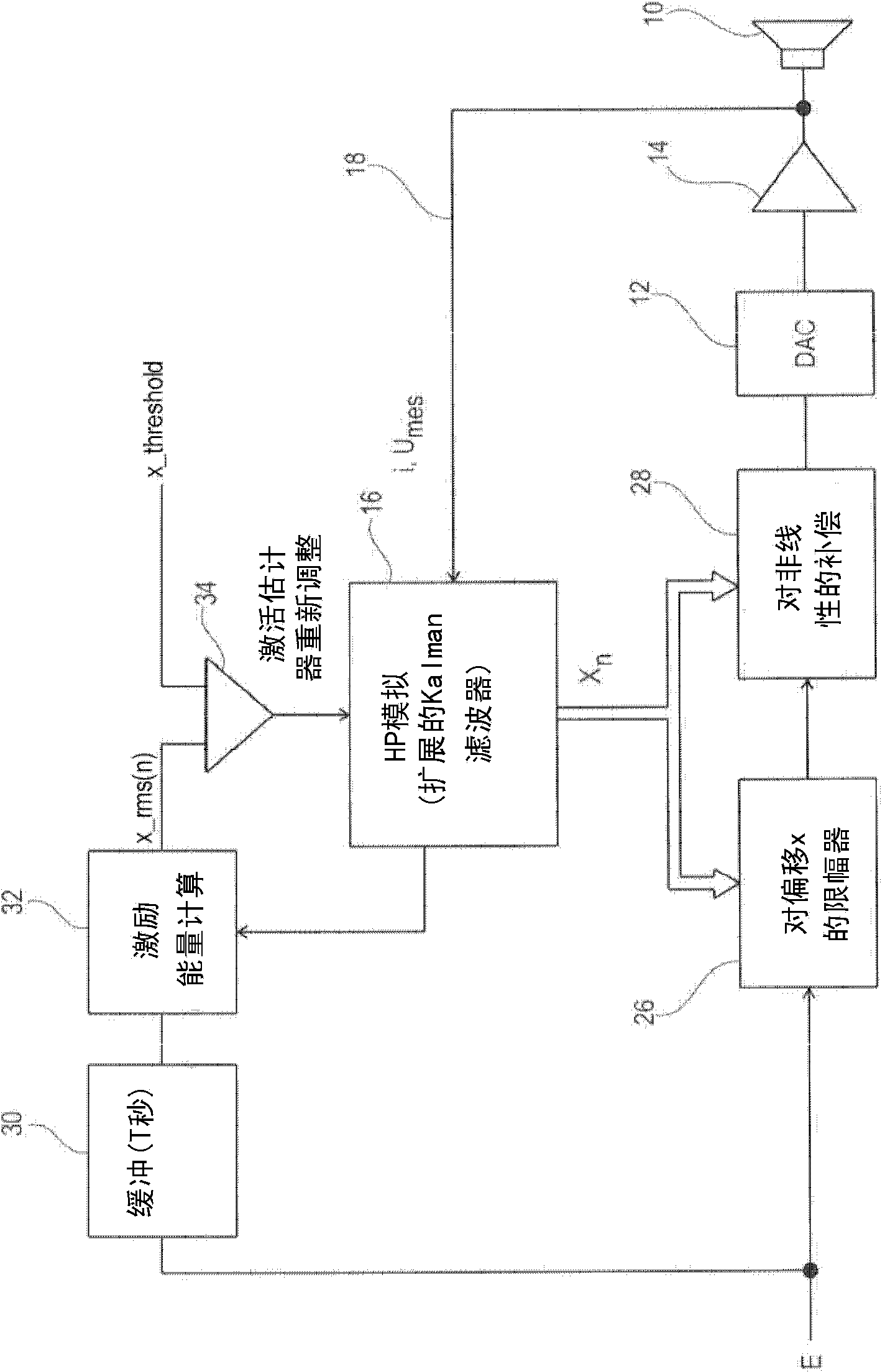Method for processing an audio signal with modeling of the overall response of the electrodynamic loudspeaker
A technology for electrodynamic speakers and audio signals, applied in frequency response correction, sensors, electrical components, etc., to solve problems such as linear parameters and nonlinear parameters that do not allow estimation of speaker responses
- Summary
- Abstract
- Description
- Claims
- Application Information
AI Technical Summary
Problems solved by technology
Method used
Image
Examples
Embodiment Construction
[0043] Modeling the total response of the loudspeaker
[0044] (Thiele and Small parameters)
[0045] We first refer to figure 1 Various parameters and equations are disclosed, which express the response of the electrodynamic loudspeaker HP. These responses are electrically excited by the generator G and transmit a pressure signal on the acoustic load CH.
[0046] The left half schematically represents the electrical part of the speaker, to which a measurable excitation voltage Umes is applied, which comes from an amplifier that generates a current i, which is also measurable and passes through the speaker coil. The first ratio transformer BI roughly represents the electrical-mechanical force conversion applied to the coil. Finally, the ratio gyrator Sd roughly represents the mechanical (displacement of the speaker diaphragm)-sound pressure conversion.
[0047] The components (resistance, inductance, and capacitance) of the equivalent diagram model electrical, mechanical (for example...
PUM
 Login to View More
Login to View More Abstract
Description
Claims
Application Information
 Login to View More
Login to View More - R&D
- Intellectual Property
- Life Sciences
- Materials
- Tech Scout
- Unparalleled Data Quality
- Higher Quality Content
- 60% Fewer Hallucinations
Browse by: Latest US Patents, China's latest patents, Technical Efficacy Thesaurus, Application Domain, Technology Topic, Popular Technical Reports.
© 2025 PatSnap. All rights reserved.Legal|Privacy policy|Modern Slavery Act Transparency Statement|Sitemap|About US| Contact US: help@patsnap.com



